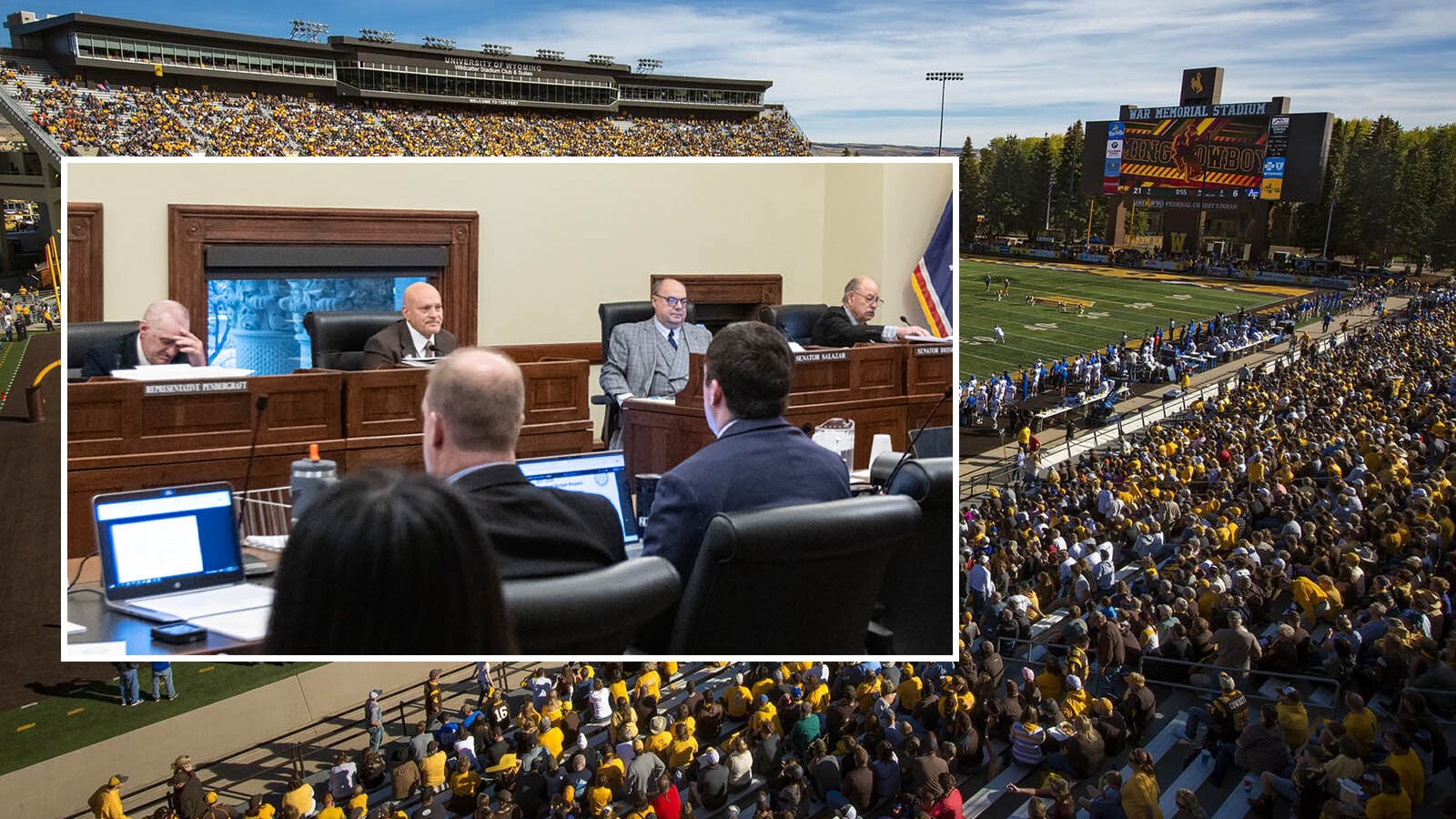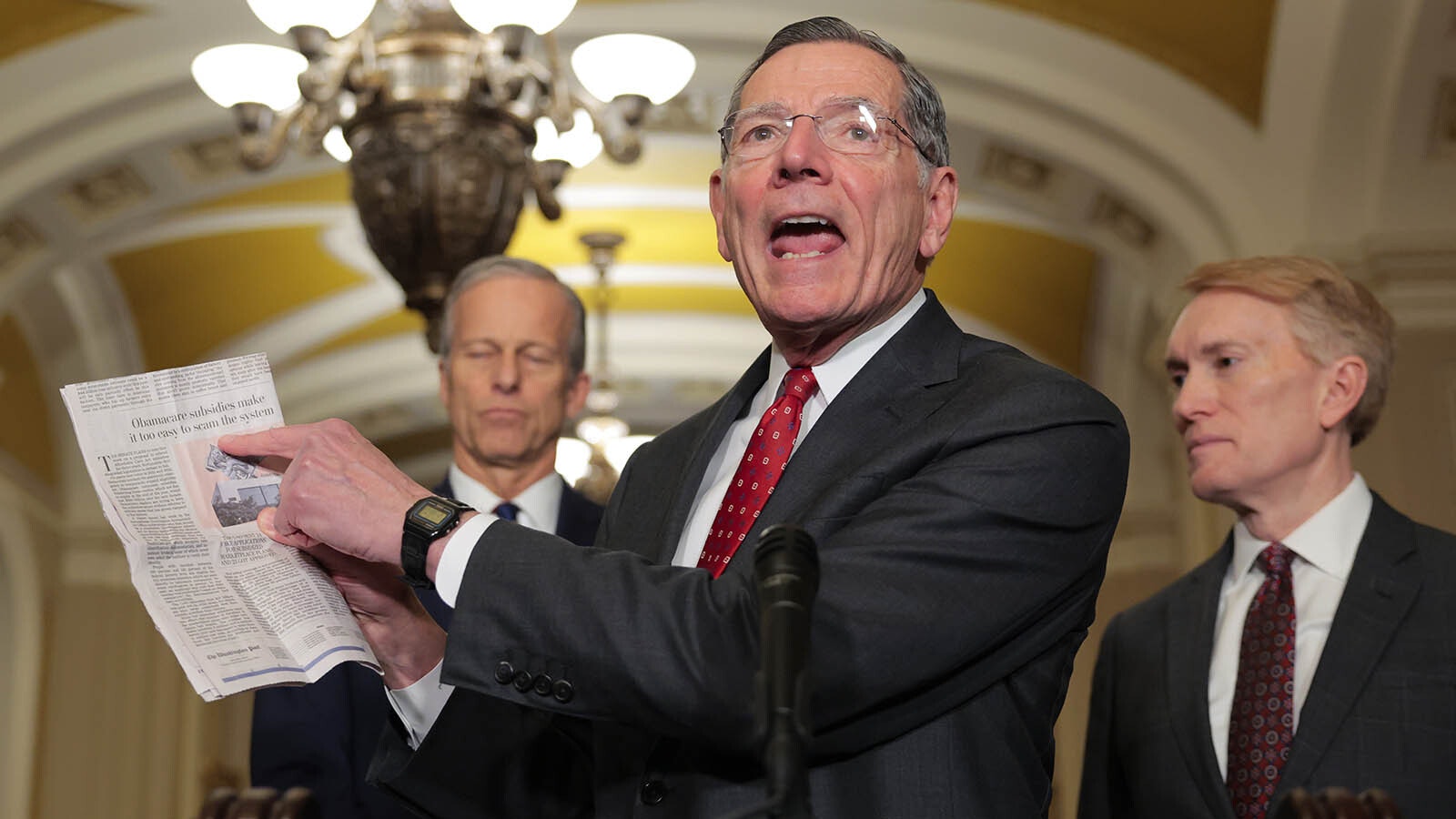WAMSUTTER — Election data tools now make it possible to zoom in on specific communities and dissect the local electorate in an instant. Data shows Wyoming growing increasingly red, but at the same time, the numbers reveal small, expanding pockets of blue voters across the state.
Those blips of blue aren’t enough to be a trend or come close to challenging GOP dominance in the state that supported President Donald Trump more by percentage of voters than any other state — three times. But they also show the Democratic Party outside Teton and Albany counties isn’t dead in Wyoming, either.
The railroad and energy town of Wamsutter in southcentral Wyoming is not an expanding blue pocket of Democratic voters, but instead is an example of the state’s overwhelming support for Republicans.
“In Wamsutter, of the 105 registered voters, you have six Democrats and 85 Republicans,” said Paul Westcott, executive vice president of L2 Data, a voter research firm, noting that the remaining voters are unaffiliated.
Westcott recently led Cowboy State Daily on a visual tour of Wyoming voters, which are represented on L2 data maps as tiny red or blue squares.
As Westcott zoomed in on Wamsutter, the Democrats appeared as lonely blue outliers, mostly alone in a sea of red.
Between Jan. 1, 2020, and Oct. 1, 2024, L2 tracked 9,717 newcomers to Wyoming, and found 7,507 were registered Republicans, 933 were registered Democrats and 1,277 were listed as “other.”
L2 collects Wyoming voter data three times a year from the Wyoming Secretary of State, deleting those who died or moved out of state. This data set is then sold to a variety of election data services, which use a combination of opinion surveys, targeting software and artificial intelligence tools to profile voters and their political leanings.
Westcott said the offices of U.S. Sen. John Barrasso and U.S. Rep. Harriett Hageman both subscribe to L2 Data to assist with constituent outreach, not to contact voters or drive voter turnout, according to a Hageman spokesperson.
L2 Data allows political office holders to update mailing lists and get a sense of any shift in party affiliation.
“Communicating to my constituents is one of the primary ways I remain accountable to them as their representative,” Hageman said in a statement to Cowboy State Daily. “When I host events like town halls and tele-workshops, it is my goal to reach as many Wyomingites as possible in order to engage them in the conversation.”
Not accounted for in the L2 Data surveys is what, if any, impact from the surge of Democrats who switched parties to Republican to vote for former congresswoman Liz Cheney in the 2022 primary election. It’s not known if those blue voters eventually switching back to Democrat could have shown up as “new” blue voters in Wyoming.
Lander Got Bluer
During election season, L2 data allows campaign strategists to identify reliably red strongholds like Wamsutter, while also keeping an eye on where blue momentum appears to be building.
By Wyoming standards, an increase of a few dozen new Democrats is considered a boom.
“Lander has the largest percentage of new movers that are Dems among their rolls,” said Westcott. “There are 3,878 voters in Lander and in the last four years, 38 new Dems have moved into town. As a percentage, that is the largest in the state.”
L2 Data shows 76% of people moving into Wyoming in the last four years were Republican, while 9.8% or 970 of them were Democrats.
In addition to Lander, the other Wyoming cities and towns growing bluer include Torrington, Cheyenne, Cody and Sheridan.
Lander also led the state in the percentage of current Democrats who switched from Republican to Democrat in the last four years.
Patrick Lawson, chair of the Fremont County Democratic Party, said the high percentage of party switchers might be explained by a crossover that happened in 2022, when Wyoming Democrats switched parties to support Rep. Liz Cheney in the Republican primary, which she lost.
“Back when she was running, we lost a lot intentionally because the state party thought that it would be best to get support behind Cheney because they thought she could win,” said Lawson.
Today, Lawson is part of a “Turn Fremont Blue” campaign, which celebrated the election of Rep. Ivan Posey, R-Fort Washakie, in 2024 and continues to see the number of local Democratic supporters grow.
“Usually at our meetings we really had like 6 to 10 people,” said Lawson. “And the last couple meetings have been more like 30. So it's tripled in size because there's just a lot more people wanting to get involved and try and do something.”
The Fremont Democratic Party meetings alternate between Riverton and Lander every month. In Lander, they meet at the library. In Riverton, the gatherings happen in the old Sundowner restaurant, said Lawson, which is now called Mount Everest and serves Nepalese food.
These numbers are notable, showing growth for Democrats in Wyoming, but also shows that the Cowboy State at the same time is getting even more red politically. There may be a few more blue dots, but there also are a lot more red.
Goshen Going Blue?
In the last four years, according to L2 Data, 161 Democrats moved to Cheyenne, 85 to Casper, 45 to Sheridan and 17 to Torrington.
“In Goshen County, multiple new folks have moved in and reached out to us,” said Mandy Weaver, communications director with the Wyoming Democratic Party. “I was surprised by that a bit.”
Every Friday during the runup to the 2024 election, Goshen County Democrats rallied on the streets of Torrington, said Weaver.
“They'd stand out and there's a decent sized group there in Torrington,” she said.
Another surprise growth spot for Democrats: Hot Springs County.
“There's a really good, active group of Dems there,” said Weaver. “Now with everything that's going on, people want to get involved. I've been working for the party for about two years now, and I've definitely seen an increase in involvement in that time.”
In January 2024, there were 23,191 registered Wyoming Democrats and 177,363 registered Wyoming Republicans, according to data from the Wyoming Secretary of State.
A year later, both numbers jumped. The number of registered Democrats increased to 34,845, while the number of Republicans surged to 227,881.
On March 1, the Secretary of State posted the latest registration numbers, and Democrats experienced a drop of a few thousand voters to 31,903, while the number of registered Republicans also dropped to 212,628.
David Madison can be reached at david@cowboystatedaily.com.







